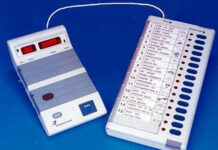SRINAGAR: Over 13 percent women experienced violence in J&K after their marriages and husband is the main perpetrator of the violence in the majority of cases.
According to news agency KNO, as per the National Family Health Survey 5 (NHFS-5) findings, just 14 percent of the women who have experienced violence in J&K have sought any help.
The report said 10 percent of women aged 18-49 experienced physical violence and three percent have ever experienced sexual violence in Jammu & Kashmir.
“In all, 10 percent of women experienced physical or sexual violence and 2 percent experienced both physical and sexual violence and for ever married women who experienced physical violence since age 15, the most common perpetrator (83.8) percent was the current husband,” it said.
“Twelve percent of ever-married women aged 18-49 in Jammu & Kashmir have experienced physical or sexual violence and one percent of women aged 18-19 pregnant have experienced physical violence during one or more of their pregnancies,” it added.
“In Jammu & Kashmir, 9 percent of ever-married women age 18-49 have experienced any form of physical violence committed by their husband, 4 percent have experienced any form of sexual violence committed by their husband, and 8 percent have experienced any form of emotional violence committed by their husband and five percent of ever-married women report having been stabbed by their husband,” the report said.
“3-4 percent report being pushed, shaken, or having something thrown at them; having their arm twisted or hair pulled; being kicked, dragged, or beaten up; or being punched with a fist or something that could hurt her. One percent have experienced being threatened or attacked with a knife, gun, or any other weapon.),” it said.
“Two percent of ever-married women age 18-49 report that their husband have physically forced them to have sex even when they did not want to, and 2 percent report that their husband forced them with threats or in any other way to perform sexual acts they did not want to perform,” it said.
Overall, 10 percent of ever-married women have experienced spousal physical or sexual violence from their current husband or, if not currently married, from their most recent husband, it said.
“Few ever-married women (3%) reported that they have initiated violence against their husband when he was not already beating or physically hurting them,” it said.
Spousal violence prevails across all groups, however, it is much lower among more educated women, 13 percent of women who have at least 12 years of schooling have experienced emotional, physical, or sexual spousal violence. The experience of spousal violence is higher among women in rural areas (15%) than in urban areas (7%); and among women who are employed for cash (19%) than women who are not employed (11%),” it added.
According to the report, the contextual and intergenerational aspects of spousal violence are clear from the fact that women whose mothers were beaten by their fathers are more likely to be in abusive marriages themselves.
“Only 14 percent of women age 18-49 who have ever experienced physical or sexual violence sought help, while 2 percent never sought help but told someone. More than four-fifths (84%) never sought help and never told anyone. Among women who sought help, the main sources of help were their own family (54%), their husband’s family (44%), or a friend (24%). Four percent sought help from the police,” the report said.
Pertinently violence against women, particularly domestic or spousal violence, is a major public and clinical health problem and a violation of women’s human rights, which also reflects the scale of gender inequality and discrimination against women and the consequences of violence on physical, mental, sexual, and reproductive health often last a lifetime.















